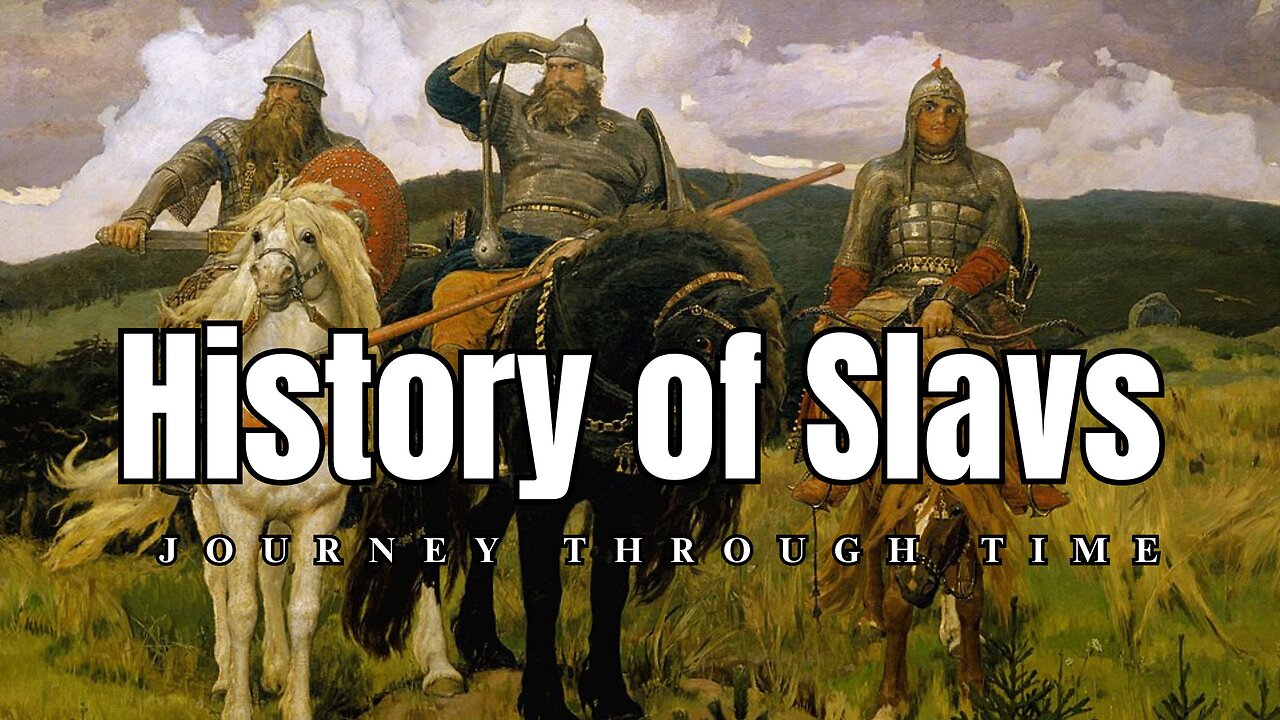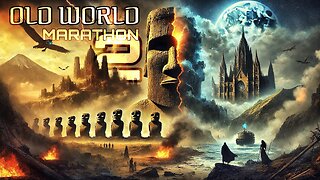Premium Only Content

History of the Slavs CC
History of the Slavs: A Journey Through Time
Welcome to our video on the history of the Slavs! The Slavs are a diverse group of people who have significantly influenced European history. Originating in Eastern Europe, they spread across the continent, shaping many cultures and forming various nations. Today, we’ll take you on a journey through their fascinating history.
Let's start with the origins of the Slavs. The early Slavs lived in the forests and plains of what are now Russia, Ukraine, and Poland. They were mainly farmers, hunters, and fishermen. The Slavs organized themselves into tribes, each led by a chieftain. They lived in small, fortified villages and were known for their skills in pottery and metalwork.
Around the 6th century, the Slavs began to migrate in large numbers. This migration was driven by pressures from groups like the Huns and the Germanic tribes. The Slavs moved into Central, Eastern, and Southern Europe, leading to the formation of different groups:
West Slavs: Poles, Czechs, and Slovaks
East Slavs: Russians, Ukrainians, and Belarusians
South Slavs: Serbs, Croats, and Bulgarians
In the 9th century, the East Slavs established the state of Kievan Rus, with Kiev as its capital. Kievan Rus became a significant political and cultural center in Eastern Europe. The West Slavs formed their own states, including the Kingdom of Poland and the Duchy of Bohemia, which is now the Czech Republic. These kingdoms played vital roles in European politics and culture.
The Slavs gradually converted to Christianity. The Byzantine Empire influenced the South and East Slavs, leading to the spread of Eastern Orthodoxy. The West Slavs were influenced by the Roman Catholic Church. Two Byzantine missionaries, Saints Cyril and Methodius, were crucial in spreading Christianity among the Slavs. They created the Glagolitic alphabet, which later evolved into the Cyrillic script, still used in many Slavic languages today.
In the 13th century, the Mongols invaded Eastern Europe, significantly impacting the East Slavs. Kievan Rus fell, and many Slavic territories came under Mongol control. Over time, the city of Moscow grew in power, eventually leading to the rise of the Russian Empire, one of the most influential states in European history.
By the 19th and 20th centuries, many Slavic peoples established modern nation-states. The Polish-Lithuanian Commonwealth, the Austro-Hungarian Empire, and the Ottoman Empire all influenced these developments. The Slavic regions were heavily affected by both World War I and World War II. After World War II, many Slavic countries fell under Soviet influence during the Cold War.
Today, the Slavs live in numerous independent countries, including Russia, Poland, the Czech Republic, Slovakia, Serbia, Croatia, Bulgaria, and others. The Slavs have a rich cultural heritage, with contributions to literature, music, art, and science. Their traditions, languages, and customs continue to be celebrated worldwide.
Conclusion
The history of the Slavs is a fascinating journey through time, marked by migrations, the formation of powerful states, and significant cultural and religious contributions. From their early beginnings in Eastern Europe to their influence on modern nations, the Slavs have played a crucial role in shaping European history. Their legacy lives on in the diverse and vibrant cultures of the Slavic people today.
Thanks for watching! Don't forget to like, share, and subscribe for more history videos!
-
 LIVE
LIVE
Grant Stinchfield
34 minutes agoA Third Term for Trump? There is a path, but it Would be a Long Shot! Here's Why...
97 watching -
 1:01:43
1:01:43
VINCE
4 hours agoWhat REALLY Happened In Wisconsin? | Episode 13 - 04/02/25
201K221 -
 LIVE
LIVE
Tudor Dixon
1 hour agoMAHA Meets DC with RFK Jr. Advisor Calley Means | The Tudor Dixon Podcast
99 watching -
 37:57
37:57
Rethinking the Dollar
1 hour agoGOLD Has Been The True LIBERATOR To Date | Morning Check-In
-
 LIVE
LIVE
MYLUNCHBREAK CHANNEL PAGE
20 hours agoThe Old World Marathon #2
783 watching -
 1:24:17
1:24:17
Caleb Hammer
1 hour agoThe Biggest Losers In Financial Audit History
223 -
 59:55
59:55
BonginoReport
6 hours agoGOP Nukes Its Own Agenda—Midterms Be Damned - BR Early Edition w/Evita (Ep.173) - 04/02/2025
132K220 -
 55:08
55:08
Bare Knuckle Fighting Championship
2 days agoBKFC DUBAI PRESS CONFERENCE
10.6K1 -
 2:17:19
2:17:19
Matt Kohrs
11 hours agoIT'S LIBERATION DAY!!! || The MK Show
35.4K4 -
 2:59:23
2:59:23
Wendy Bell Radio
7 hours agoDemocrats Should Try Harder Not To Suck
61K46